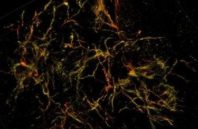Knowing that a hurdle to understanding Alzheimer’s disease is not being able to clearly see why the disease starts, researchers at Purdue University (West Lafayette, IN) have developed a superresolution nanoscope that provides a 3D view of brain molecules with 10X greater detail. This imaging technique could help reveal how the disease progresses and where new treatments could intervene.
The nanoscope helped Indiana University (Bloomington, IN) researchers better understand the structure of plaques that form in the brain of Alzheimer’s patients, pinpointing the characteristics that are possibly responsible for damage.
Long before Alzheimer’s develops in an individual, amyloid plaques accumulate in the brain. These clusters interact with surrounding cells, causing inflammation that destroys neurons and creates memory problems. The deposition of these plaques is currently the earliest detectable evidence of pathological change leading to Alzheimer’s disease.

 (585) 768-2513
(585) 768-2513

